Hellenistic crouching Venus, c.1st century BC
Marble
Height: 41cm
11743
Further images
-
(View a larger image of thumbnail 1)
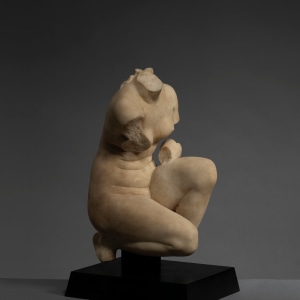
-
(View a larger image of thumbnail 2)
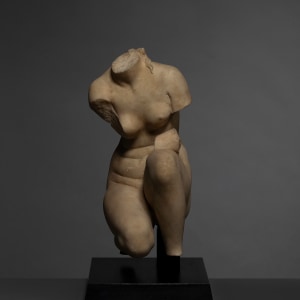
-
(View a larger image of thumbnail 3)
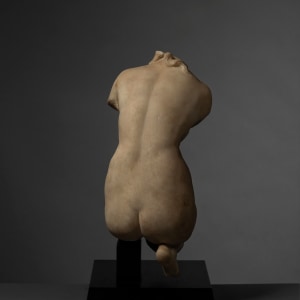
-
(View a larger image of thumbnail 4)
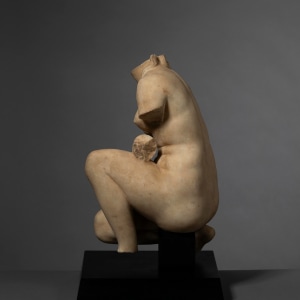
-
(View a larger image of thumbnail 5)
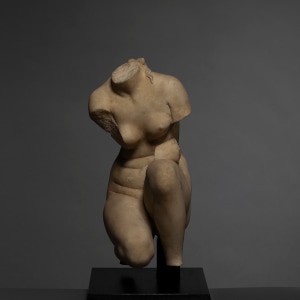
-
(View a larger image of thumbnail 6)
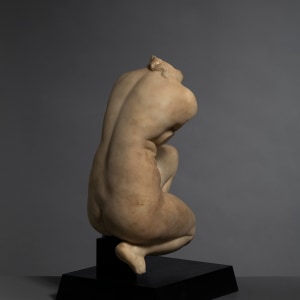
-
(View a larger image of thumbnail 7)
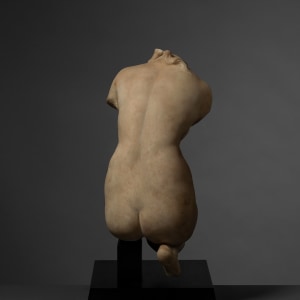
-
(View a larger image of thumbnail 8)
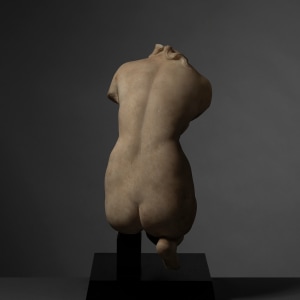
-
(View a larger image of thumbnail 9)
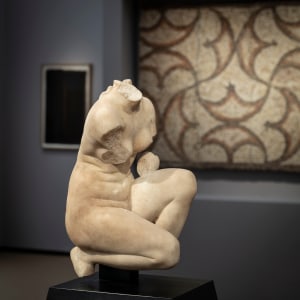
The arresting sculpture of Venus shows the goddess of love crouching down, one knee parallel to the ground the other bent upwards, her right arm leaning on her thigh and...
The arresting sculpture of Venus shows the goddess of love crouching down, one knee parallel to the ground the other bent upwards, her right arm leaning on her thigh and reaching across her body to partially conceal herself. The womanly contours of her body are exposed for the viewer to admire, and her stomach has naturalistic folds as she crouches. On her back are two delicate dimples above her buttocks. The sculptor has masterfully shown the goddess with youthful breasts, a softness to the muscles on her legs, and a hint at the bones of her clavicle. A wavy tendril of hair falls about each shoulder.
A few small surface abrasions toned down on the stomach, left hip, outer right thigh and right foot. An old dowel hole on the underside of the buttocks filled in.
Doidalsas of Bithynia, a sculptor of the 3rd century BC whose depictions of the goddess of love gained him much renown in antiquity, created the original version of this type for King Nicomedes of the Greek Kingdom of Bithynia. This image of Venus at her bath was greatly venerated during the Roman period, leading to multiple copies being made.
A few small surface abrasions toned down on the stomach, left hip, outer right thigh and right foot. An old dowel hole on the underside of the buttocks filled in.
Doidalsas of Bithynia, a sculptor of the 3rd century BC whose depictions of the goddess of love gained him much renown in antiquity, created the original version of this type for King Nicomedes of the Greek Kingdom of Bithynia. This image of Venus at her bath was greatly venerated during the Roman period, leading to multiple copies being made.
Provenance
Galerie Simone de Monbrison, Paris, FrancePrivate collection; acquired from the above, 23rd October 1969
Private collection, Chicago, USA
Literature
For comparable examples see Margarete Bieber, The Sculpture of the Hellenistic Age (Columbia, 1961) p.240, figs.290-3Publications
Galerie de Simone de Monbrison, Arts Antiques Arts Primitifs (Paris, 1969), no.291
of 16








